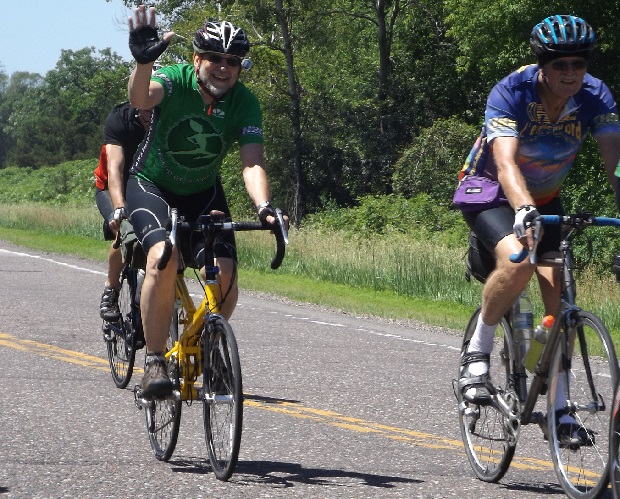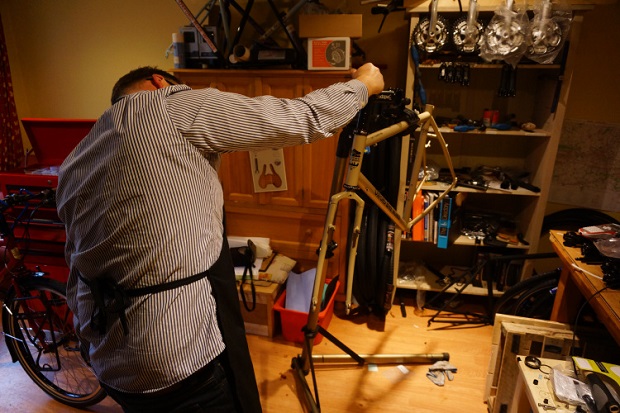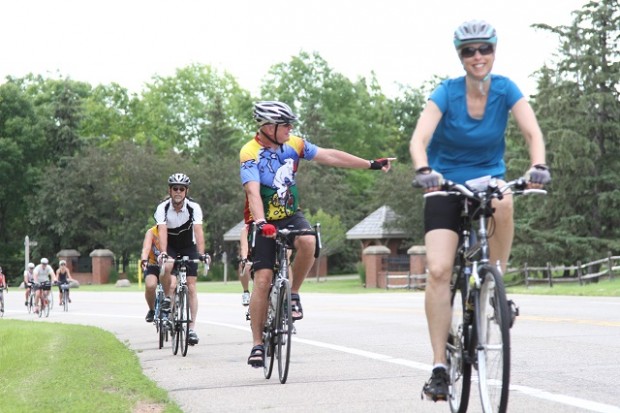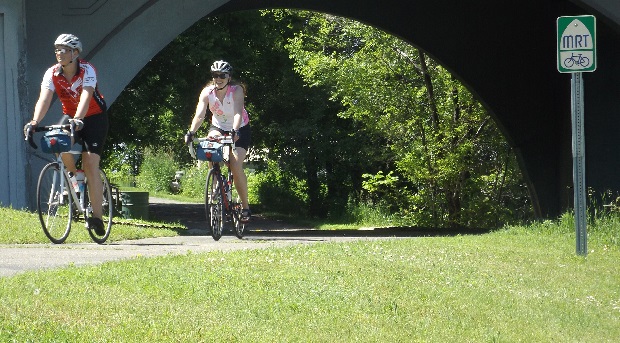If your interest has been piqued looking at all the ride opportunities in the Destination Section or on our Events Calendar at HaveFunBiking.com then the next step is gaining the confidence to sign up and have a memorable experience. As bike tourism soars the biggest tip we can give is to know your limitations when planning and gradually build your stamina to achieve your planned trips goals.

So, whether you are riding for a charity, an organized touring ride or just for fun with a friend or by yourself, the following five tips will help you prepare:
-
Gradually build up your mileage.
Most supported bike rides (day and multi-tour) have rest stops every 12 to 20 miles, depending on the over-all distance of the ride. So if you can ride 20 mile comfortably, you will do fine. If you’re a beginning rider, start your training by doing short loops of maybe four to five mile the first time out. Then, on your next ride, expand your route by adding a few miles and then each consecutive time out add a few more miles. Once you’ve mastered 15 to 20 miles out to a halfway point, take a break, than ride back. As your cycle outings become easier ride out 30 miles then ride back, taking a couple of short breaks along the way. Keep riding in this manner until you get to the distance of the rides you plan to participate in.

During the short breaks you take: have a light snack and consume plenty of water or sports drink – also while you are riding. To avoid “bonking” or dehydration, you should follow the rule of “drink before you’re thirsty; eat before you’re hungry.” In warmer weather, the rule of thumb is: “finish at least one water bottle for every 15 to 20 miles, if not more. And at rest stops don’t spend too much time dawdling. If you rest too long, your body will thinks it’s done for the day and you will have to warm up again when you get back in the saddle.
-
Have your bicycle tuned and in good working order.
The two main advantages of a well working machine are: your confidence level will be higher and the riding you do will be easier. So don’t wait until the week before your big ride is planned to take your bike into your favorite shop for that tune-up.

As the weather warms up this spring the service department at most bike shops become backed up – many times longer than a week. It is best to take your bike into your favorite shop early and the best time is before you start your practice rides. Once it’s tuned up, nothing major should go wrong and the shop that tuned it up should be glad to give it a last-minute safety check a couple of days before the event you have planned.
-
What gear to pack for those multi-day bike vacations?
Normally there are three scenario’s to consider for packing: Self-contained rides requiring paniers, racks and maybe a bike trailer; Supported-tours were a vehicle halls all your overnight gear, so a trunk or a handlebar bag is sufficient; And the highbred to the above vacations, the plastic tour where you buy most things as you go.

Self-contained bike tours are like overnight backpacking treks; you have to weigh each piece of gear for the lightest possible items to carry. This often means sacrificing comfort, such as sawing the handle off of your toothbrush, selecting one pot or pan for all your cooking needs and finding the thinnest sleeping pad and a tent that you barely have room to change your clothes in.
Here on a supported tour you have the luxury of somebody else carrying your gear for you, so you can afford to take a few extra comfort items and leave your tooth brush fully intact. If you’re traveling alone on one of these organized rides and camping, use a spacious 2-person tent or larger so your bike fits inside. Take along a nice, thick sleeping pad or an inflatable mattress. If you’re a light sleeper, bring along ear plugs and an eye shade to minimize disturbances from the other campers around you. And, maybe a flashlight or lantern for reading that book you packed or for those late-night excursions to the restroom.
If your budget will handle it, a plastic tour will offer you many luxuries along the way and you can pack less. However, your planning and reaching your mileage goals are very important. In remote areas you may find food, lodging and even water options 50 to 100-miles apart. So it is very important to verify the route plan and call ahead for reservations and allow yourself plenty of time for any obstacle that may slow you down.
On most rides you will need far less clothing than you think. You’ll be wearing your casual off-the-bike clothes for only a few hours each day, so you can probably double up and wear the same t-shirt and pair of shorts several times. Regarding your cycling cloths, rinse them out so they are dry by morning and ready to pack for another day – this way two to three changes should be sufficient. And for evenings when it cools off you should only need one sweatshirt or light jacket along.
When riding on a supported tour weight limits for bags may be enforced, so check with your tour operator before packing. Here, if you are riding with a partner, put your shared camping gear in one bag, and combine your clothing in a second bag. Or, pack your personal items and clothing in separate bags, and split up the other shared gear between you.
-
Remember you are riding to have fun!
You’ve worked hard to save for the trip, spent months training and if your ride event is a charity ride, you have also spent time raising funds and awareness for their cause.

The ride is your reward for all of the hard work you’ve put in. Enjoy it however you wish! Ride at whatever pace is comfortable for you. Stop at the rest stops and enjoy socializing – Stop and smell the roses, as the saying goes. If you end up feeling like you’re having a bad day or if the weather turns sour, don’t feel guilty if you have to hitch a ride in the SAG wagon, or a pickup truck going your way on a self-supported ride. Forcing yourself to suffer through a ride does not do anything for your confidence level or help the people you may be riding with. Stay safe!
-
Be a good bike ambassador.
Always be aware that non-cyclists will judge your actions and then judge every other cyclist based on those actions. This may not be fair, but it’s a fact of life. By behaving as an upstanding bicycling citizen at all times, you’ll make riding safer and more enjoyable for yourself and the millions of bicyclists behind you. Don’t assume that because you are riding for a charity or other organized ride that you’re above the law. Obey all traffic regulations, just like driving a car you are expected to follow the same rules of the road.

Even though most States allow bicyclists to ride two abreast, if a motor vehicle is trying to pass you, single up for a moment to make it easier. Don’t pass drivers on the right at stop signs or traffic lights; get in back of the line and wait your turn; and signal if you are stopping, slowing down or turning
When patronizing restaurants and other local businesses along your route, it’s reasonable to expect good service, but remember that these establishments probably aren’t equipped to handle dozens (or even hundreds) of cyclists during a special bike event. Be patient and tip well. Don’t assume it is okay to use their restrooms or fill up your water bottles if you’re not buying something from them. Make them look forward to your next visit, so that they will be excited about future cycling events and riders coming through their town.
Note the term “bicycle tourism” refers to non-competitive cycling trips, ranging from daylong city tours to multi-day explorations along a route.


